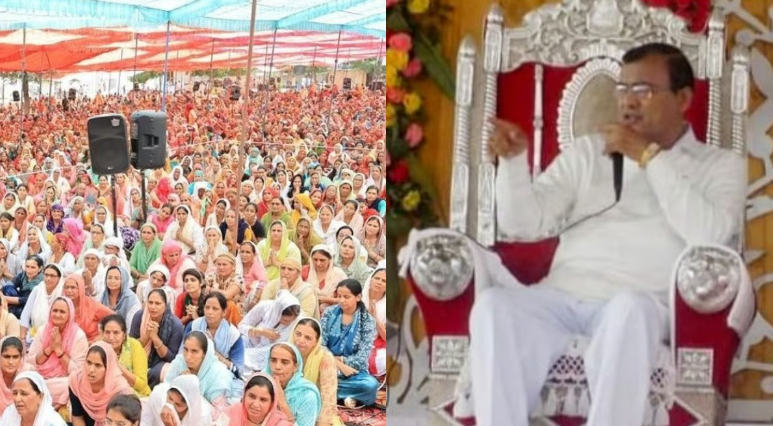The Hathras Questions: A Preventable Tragedy (GS Paper 2, Society)

Introduction
- The tragic stampede in Hathras on July 2, which resulted in the loss of 121 lives, predominantly women and children, was an avoidable disaster.
- The incident exposes significant failures that warrant thorough examination.
- Preliminary reports suggest that the district administration bears considerable responsibility for the catastrophe.
How the Event Transpired
- The chain of events leading to the tragedy began with a seemingly harmless request for permission from the district authorities.
- The organizers anticipated around 80,000 devotees for a samagam (congregation of devotees).
- The officials approved this request as a routine procedure, seemingly unaware or dismissive of the likelihood that the crowd could swell far beyond the sanctioned number.
- Consequently, over three times the expected number of devotees of Bhole Baba gathered at the event site, setting the stage for disaster.
Who is the Infamous Baba?
- The central figure in this event, Bhole Baba, is a former UP police constable, Suraj Pal Singh.
- With a history of misdemeanors in his official capacity, Singh was suspended and later opted for voluntary retirement while out on bail.
- He then reinvented himself as a godman, leveraging a business model that allegedly exploited people vulnerable to misinformation.
- His followers were led to believe in the curative powers of his photographs, which significantly contributed to his large following.
The Crowd Management at the Event
- The management of such a large crowd required meticulous planning and execution, which was glaringly absent.
- The massive influx of 2,50,000 people would have taken about seven to eight hours, especially given the venue's proximity to a national highway.
- It is plausible that traffic jams caused by the devotees' arrival would have been reported to the city and district control rooms.
- However, there was no evident contingency plan.
- Proper crowd management measures, including CCTVs, well-defined exit and entry points, duty assignments, and medical aid preparedness, were conspicuously missing.
The Aftermath of the Incident
- Post-mortem reports revealed that the majority of deaths were due to broken rib cages, crushing, asphyxia, and/or hemorrhage.
- Following the tragedy, a First Information Report (FIR) was lodged against the sevadar volunteers, but Bhole Baba himself has not been named in the FIR.
- A Special Investigation Team (SIT) has been formed to investigate the case.
- It is crucial that this SIT operates transparently and expedites its report submission.
Way Forward
- Bhole Baba and similar figures can be prosecuted under the Drugs and Magic Remedies (Objectionable Advertisements) Act, 1954.
- The ill-gotten wealth amassed by such individuals should be reclaimed by the state.
- Section 14(1) of The Uttar Pradesh Gangsters and Anti-Social Activities (Prevention) Act, 1986, provides the legal framework to attach such properties after due scrutiny.
Conclusion
- The Hathras stampede highlights the dire consequences of neglecting established protocols for crowd management.
- There are comprehensive guidelines and scholarly studies on handling large gatherings effectively.
- The Hathras incident exemplifies the disastrous outcomes of failing to implement these best practices.
- It is imperative that the lessons from this tragedy lead to stricter adherence to crowd management protocols and accountability for those responsible.


